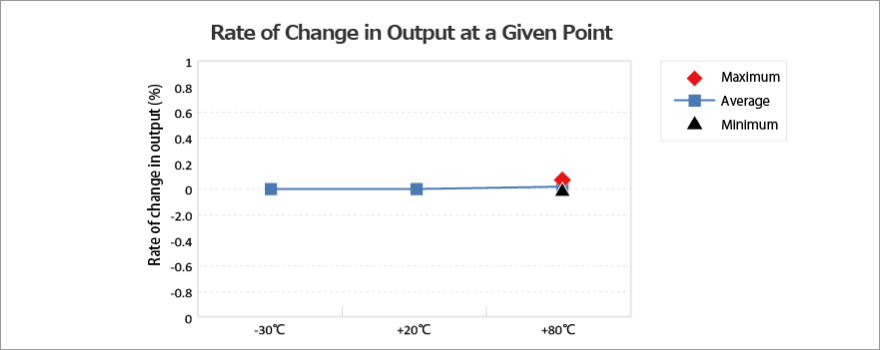Alps Alpine employs material and processing technologies built up over the years through potentiometer business to provide resistor-based position sensors that are durable, highly accurate and light to operate.
Here we explain the main features and sensing principles of our resistive position sensors.
Features of Resistive Position Sensors
Position sensors come in a variety of forms, such as magnetic and optical types, but here we cover the features of resistive position sensors.
By harnessing these characteristics, it is possible to configure resistive position sensors into devices that are easier to use and so much more cost-efficient than other types of sensors.
Direct Connection to A/D Port for Analog Output
As the output signal is a voltage value and works as direct input to the A/D port of a microcontroller, there is no need for any special conversion circuit.

Excellent Temperature Change Characteristics
The output of a resistive position sensor is the ratio of output voltage (between terminals 1 and 2) to applied voltage (between terminals 1 and 3). As temperature change has little effect, no compensation for the external temperature is necessary.

Excellent External Noise Characteristics
Resistive position sensors are not affected by external magnetism like a magnetic sensor, or by foreign objects like an optical sensor.
Standalone Sensing
In contrast with other sensors, which must be combined with another device, such as a magnet or LED, this device can perform sensing on its own, thereby avoiding unnecessary costs or use of space.
Mechanical Position Sensing
If switched off while in operation and then switched on again, sensing will resume from its position at the time it was switched off without returning to the start position. This is because position is ascertained mechanically.
Position Sensing Principles of a Resistive Position Sensor
Resistive position sensors have the same basic structure as a variable resistor. Position is determined using the divided voltage value attained when a brush slides over the resistor.
Linearity a Key Characteristic of Resistive Position Sensors
Linearity represents the deviation (precision) between the electrical signal output and the actual mechanical travel.
Without good linearity, it is harder to achieve high-precision position control of a device.

Linearity Specification for Linear Sensors
With rated voltage applied between terminals 1 and 3, the straight line joining VB and VA, as the actually measured output values at specified reference positions B and A, is the ideal line. Linearity, expressed as a percentage, is the deviation from the ideal line when the voltage applied between terminals 1 and 3 is 100%.

For the RDC10 Series, linearity of ±0.5% accuracy is guaranteed.
































